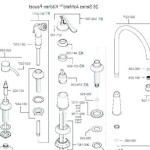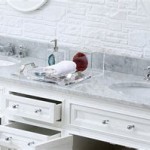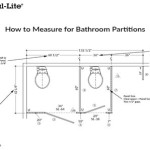Can I Put Drano In My Bathroom Sink? Understanding the Risks and Alternatives
The question of whether to use Drano in a bathroom sink is a common one, especially when faced with a stubborn clog. Drano, a popular brand of drain cleaner, is readily available and often perceived as a quick and efficient solution. However, before reaching for the bottle, it's crucial to understand the potential risks and consequences of using Drano, as well as to explore safer and more effective alternatives.
Drano products contain harsh chemicals designed to dissolve or break down common clog-causing materials like hair, grease, and soap scum. While this may seem appealing, these chemicals can also damage plumbing systems, pose health hazards, and contribute to environmental issues. A responsible approach to drain cleaning involves carefully considering all options and selecting the most appropriate method based on the specific situation.
Understanding the Chemical Composition and Action of Drano
Drano's effectiveness stems from its aggressive chemical composition. Different Drano formulations contain various active ingredients, but they generally include one or more of the following:
Sodium hydroxide (lye): A highly alkaline substance that can dissolve organic materials like hair and grease. Lye generates heat when it reacts with water, which can further aid in breaking down clogs.
Sodium hypochlorite (bleach): A powerful oxidizing agent that helps to degrade proteins and other organic compounds. Bleach also possesses disinfectant properties.
Aluminum: In some formulations, aluminum reacts with sodium hydroxide to create hydrogen gas, which can help to dislodge clogs with bubbling action. This reaction also generates considerable heat.
These chemicals work synergistically to attack the substances that commonly cause drain blockages. However, their aggressive nature also makes them potentially harmful to plumbing, the environment, and human health.
When Drano is poured into a drain, the chemicals react with the clog and the surrounding materials. The heat generated can soften or melt grease and other substances, while the alkaline chemicals break down organic matter. The bubbling action, if present, can help to dislodge the clog and allow water to flow more freely. However, this process is not always successful.
The Potential Risks and Drawbacks of Using Drano in Bathroom Sinks
While Drano may seem like a convenient solution for a clogged bathroom sink, it's essential to be aware of the potential risks associated with its use. These risks extend beyond simply not clearing the drain and can lead to more significant problems.
Damage to Plumbing: Drano's harsh chemicals can corrode and damage various plumbing materials. Plastic pipes, commonly used in modern plumbing systems, can become brittle and crack over time with repeated exposure to Drano. Metal pipes, such as copper and steel, can also corrode, leading to leaks and eventual pipe failure. The heat generated by the chemical reactions can also soften PVC pipes, causing them to warp or sag.
Ineffectiveness on Certain Clogs: Drano is most effective on clogs consisting of hair, grease, and soap scum. However, it may not be effective on clogs caused by solid objects like toys, jewelry, or large clumps of debris. In these cases, Drano can simply sit in the drain, potentially hardening and exacerbating the problem. Attempting to use more Drano in such situations will only worsen the situation, increasing the risk of pipe damage and chemical exposure.
Health Hazards: Drano contains corrosive chemicals that can cause severe burns to the skin and eyes. Inhalation of Drano fumes can also irritate the respiratory system. Accidental ingestion of Drano can be fatal. It's crucial to exercise extreme caution when handling Drano and to wear appropriate protective gear, such as gloves and eye protection. Proper ventilation is essential when using Drano to avoid inhaling harmful fumes. Children and pets should be kept away from areas where Drano is being used or stored.
Environmental Impact: The chemicals in Drano can be harmful to the environment if they enter the water supply. Wastewater treatment plants may not be fully equipped to remove these chemicals, potentially leading to contamination of rivers and lakes. Furthermore, the manufacturing and packaging of Drano contribute to pollution and resource depletion. Choosing eco-friendly drain cleaning alternatives can help minimize environmental impact.
Chemical Reactions with Other Cleaners: Mixing Drano with other cleaning products, particularly those containing ammonia or acids, can create dangerous and potentially explosive gases. For example, mixing Drano with bleach can produce chlorine gas, which is highly toxic and can cause severe respiratory damage. It is imperative to thoroughly flush the drain with water after using Drano before introducing any other cleaning agents.
Trapped Chemical Residue: If Drano fails to clear the clog completely, a pool of corrosive chemicals can remain in the drainpipe. This residue poses an ongoing risk of pipe damage and chemical exposure. Plunging the drain after using Drano can splash the chemical residue onto skin or clothing. It also makes future plumbing repairs more hazardous, as plumbers must take extra precautions to avoid contact with the trapped chemicals.
Safer and More Effective Alternatives to Drano
Given the potential risks associated with Drano, it's wise to explore safer and more effective alternatives for clearing clogged bathroom sinks. Several methods can address common clogs without posing the same dangers to plumbing, health, or the environment.
Plunging: A plunger is a simple and effective tool for dislodging many types of clogs. Ensure there is enough water in the sink to cover the cup of the plunger. Create a tight seal around the drain opening and use a vigorous up-and-down motion to generate pressure. Repeat this process several times, and then remove the plunger to see if the clog has cleared. Plunging is a physical method that does not involve harsh chemicals and is generally safe for most plumbing systems.
Baking Soda and Vinegar: This natural combination creates a bubbling reaction that can help to break down clogs. Pour one cup of baking soda down the drain, followed by one cup of vinegar. Let the mixture fizz for about 30 minutes, and then flush with hot water. The baking soda and vinegar combination is a milder alternative to Drano that is less likely to damage pipes or pose health hazards. This method is particularly effective for dissolving grease and soap scum.
Boiling Water: Pouring boiling water down the drain can often dissolve grease and soap scum. This method works best for simple clogs that are close to the drain opening. Exercise caution when pouring boiling water to avoid burns. Avoid using boiling water on PVC pipes, as the high temperature can damage the plastic. Boiling water is a simple and environmentally friendly solution that is often effective for minor clogs.
Drain Snake (Plumbing Snake): A drain snake is a flexible tool that can be inserted into the drain to break up or retrieve clogs. Drain snakes come in various sizes and designs, including manual and motorized models. Insert the snake into the drain opening and carefully maneuver it through the pipes until it encounters the clog. Rotate the snake to break up the clog, or use the hook to pull it out. Drain snakes are effective for removing hair, debris, and other stubborn clogs that cannot be dissolved by chemicals or dislodged by plunging.
Enzyme-Based Drain Cleaners: These cleaners utilize enzymes to break down organic materials like hair, grease, and food particles. Enzyme-based cleaners are generally safer for plumbing and the environment than chemical drain cleaners. They work gradually over time, so they may not provide immediate results like Drano. However, they are a good option for regular drain maintenance to prevent clogs from forming. Enzyme-based cleaners are biodegradable and do not contain harsh chemicals that can damage pipes or harm aquatic life.
Professional Plumbing Services: When all else fails, it's best to consult a professional plumber. Plumbers have the expertise and equipment to diagnose and resolve complex drain problems safely and effectively. They can use specialized tools like hydro-jetters to blast away stubborn clogs and can also inspect plumbing systems for underlying issues that may be contributing to recurring clogs. Professional plumbing services may be more expensive than DIY solutions, but they can prevent further damage to plumbing and ensure that the problem is resolved correctly.
In summary, while Drano may offer a seemingly quick fix for clogged bathroom sinks, its potential risks to plumbing, health, and the environment outweigh its convenience. Exploring safer and more effective alternatives, such as plunging, using baking soda and vinegar, or employing a drain snake, can address common clogs without the associated hazards. Furthermore, preventative measures, such as using drain screens to catch hair and debris, can help to minimize the occurrence of clogs in the first place. When faced with a persistent or complex clog, seeking professional plumbing services is the most responsible course of action.

Does Drano Work How It Review Prudent Reviews

Why Plumbers Drano What Homeowners Should Know Metro Heating Cooling

Does Drano Work How It Should I Use Smiley Drain Cleaning

How To Clear A Clogged Drain Reviews By Wirecutter

How To Unclog A Sink Drain

What To Do If You Put Drano In Toilet Validbuilding

Can You Put Drano In The Kitchen Sink

Drano Not Working How To Remove Clogs When Fails Prudent Reviews

Drano Max Gel

Liquid Plumr Vs Drano Which Drain Cleaner Is Better Prudent Reviews
Related Posts







